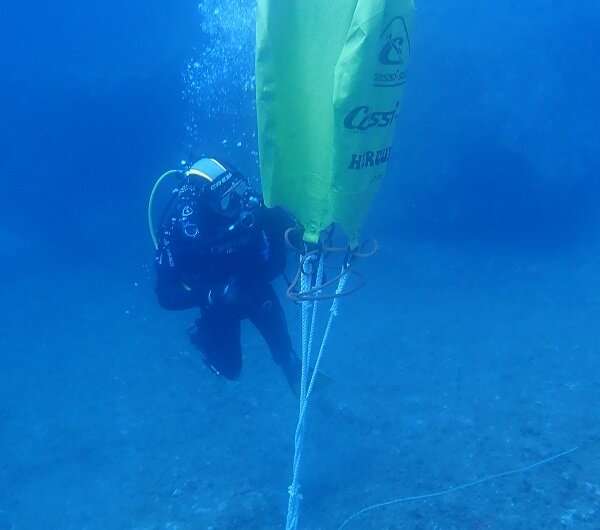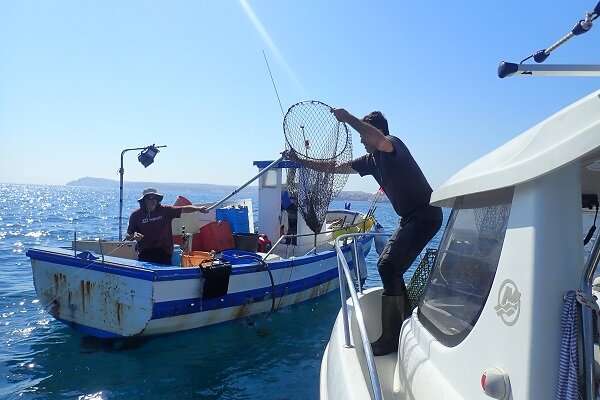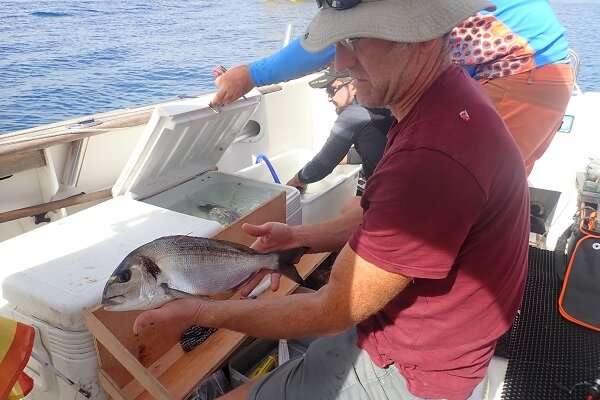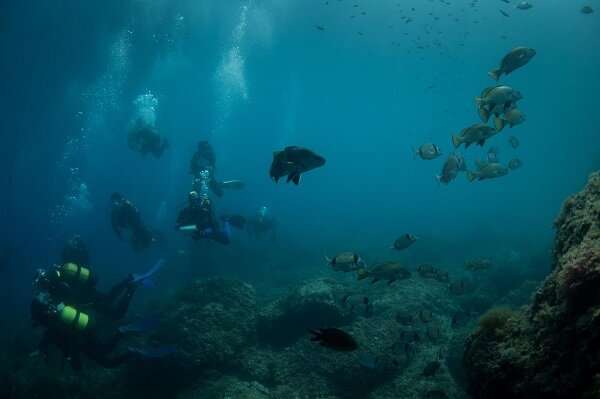New fishing management tools for the Pyrenean marine coastline

The Pyrenean marine coastline has a high biological connectivity between fish populations that move around different habitats at a regional scale, according to the RESMED project (2019–2021), an initiative based on acoustic telemetry techniques for studying the movements of fish and finding the characteristics of the ecosystems of this Mediterranean region.
The Pyrenean marine coastline is an area in the north-western Mediterranean which has emblematic species and ecosystem services of economic interest (fishing, tourism, leisure, etc.). The team in RESMED installed a net with 94 acoustic receptors—or underwater locator beacons—to study the movement of the marked fish—gilthead bream, sea bass, black seabream, greater amberjack, red sea scorpionfish, teleost fish, white seabream, bluefish and the pomfret, among others—in all the studied marine areas. In the project, which counts on participatory science, the participation of artisanal and recreational fishermen has been determining in the task of catching fish and transferring information to the scientific team.

The results in ESMED show that the movement of many species creates a great connectivity of populations between the different protected marine areas: the marine reserve of Cerbère-Banyuls, the natural park of Cap de Creus, the Montgrí Natural Park, the Medes islands and Baix Ter, and the Aiguamolls de l'Empordà Natural Park.
"This biological connectivity will allow us to understand this region as a network of marine reserves, which are connected by the movement of the species between the habitats that act as ecological corridors," says Bernat Hereu, lecturer from the Department of Evolutionary Biology, Ecology and Environmental Sciences of the UB.
As strategic action tools, RESMED proposes to combine fisheries management and spatial management measures (marine reserves) according to the life cycle of the marine protected areas (MPA) and to promote MPAs without fishing, as well as including the connectivity in the marine management plans and extending the spatial scales of scientific studies to understand the ecological functioning of the coastline. The project also points out the need to equalize the MPA protection figures in Catalonia, and also those that exist in Catalonia in relation to France.

Habitats of high ecological value without spatial protection
The movement and use of habitats of the studied species varies over the different phases of the fish life cycle. There is a great diversity of movement strategies in different species of coastal fish species of fishing interest, which can move hundreds of kilometers along the coast. "Many of the studied species show seasonal movement patterns linked to reproduction, and we identified the existence of reproductive aggregations for several species in certain areas and seasons (groupers, gilthead bream, sea bass, black seabream)," says Hereu.
River mouths and final stretches of rivers or coastal lagoons—even the meadows of the phanerogam Cymodocea nodosa—are described as biological connectors and habitats of great ecological value for the reproduction and conservation of various species. "However, even today, they are still not under any kind of spatial protection," warns the expert.

It would also be important to protect sheltered coves—essential for the survival of juveniles—and harbors and breakwaters, artificial habitats with a high density of fish which was little known about until now. Seabass regularly move around harbor areas, while other species are resident, such as mullets, and other fish (gulfweed, two-banded seabream and saddled seabream) use these areas in their juvenile stages.
Outside large MPAs, significant overfishing has been detected even in sectors within the same reserves. Sedentary species (groupers, corbs, red scorpionfish, etc.) are protected within MPAs, while more mobile fish (sea bass and sea bream, with a larger movement area) are caught outside the reserves. "The buffer zones of marine reserves have proved to be small in terms of species movement, and connectivity makes them ineffective," says Bernat Hereu. "Populations of groupers and other large predatory fish do not recover in marine reserve areas where spearfishing is allowed."
In a broader context, the set of proposals of the RESMED project can be extended and implemented in other areas of Catalonia and the Mediterranean. "These more efficient management tools will allow an improvement in the use of resources, as well as in the uses and the various ecosystem services provided by this marine region of the Mediterranean coast," Hereu says.
-

Lecturer Bernat Hereu, from the Faculty of Biology and the Biodiversity Research Institute (IRBio). Credit: Bernat Hereu (University of Barcelona - IRBio) -

In this project also participate the experts Eneko Aspillaga, David Casals, Philippe Lenfant, Julia Ortega, Joan Lluís Riera, Graciel·la Rovira, Miquel Sacanell, Gilles Sargoni and Meryl Zimmermann. Credit: Bernat Hereu (University of Barcelona - IRBio) -

The RESMED project can be extended and implemented in other areas of Catalonia and the Mediterranean. Credit: Bernat Hereu (University of Barcelona - IRBio)
Along these lines, the Catalan Aquatic Fauna Marking and Monitoring Network is being developed, in which the hydrophone network will be extended along the entire Catalan coast within the framework of collaboration between all the actors and users of the territory.
Provided by University of Barcelona





















